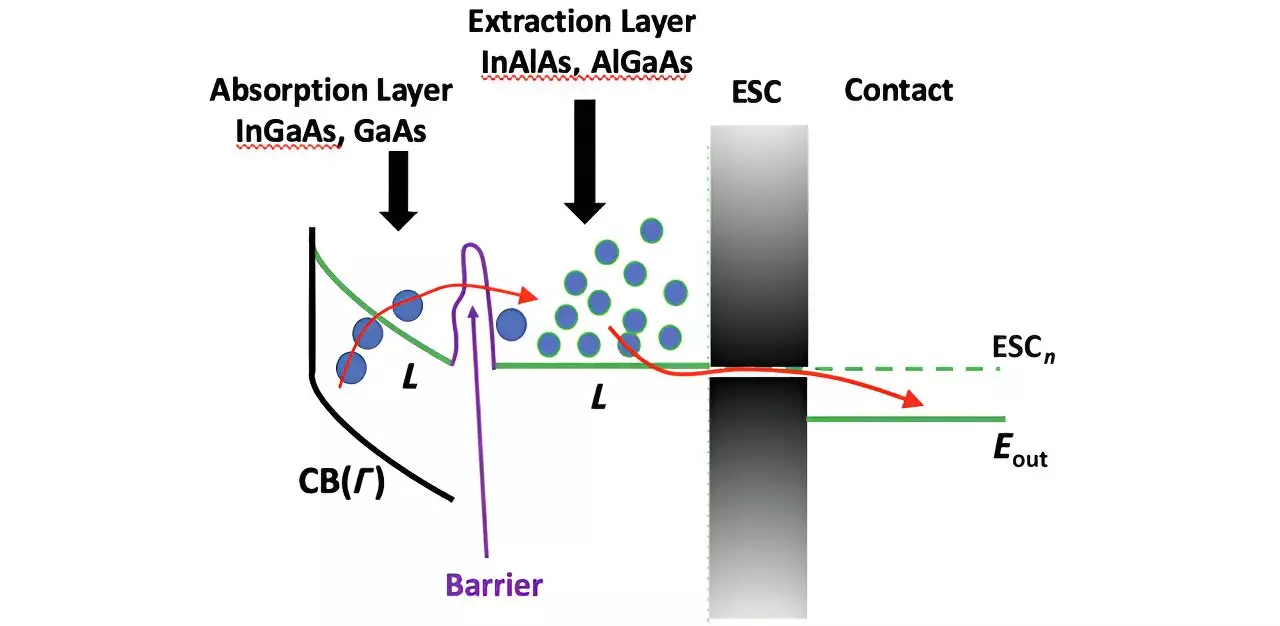The pursuit of greater efficiency in solar energy technology remains an important focus for researchers around the world. Among the various approaches explored, hot carrier solar cells stand out for their potential to exceed traditional efficiency limits. Specifically, they aim to transcend the Shockley–Queisser limit—the theoretical maximum efficiency for single-junction solar cells that has persisted as a challenge for many years. While the promise of hot carrier solar cells was recognized decades ago, the road to practical applications has been impeded by complex issues related to the extraction of hot electrons. Recent studies highlight these challenges and offer potential solutions that could significantly advance the development of this technology.
Hot carriers are charge carriers that possess excess energy, making them more valuable in the context of solar energy conversion. However, efficiently collecting these hot electrons poses a significant barrier. The research community has directed attention toward the management of heterostructures—interfaces where different materials meet and interact. Ideally, these structures can facilitate the temporary storage and eventual extraction of hot electrons. Yet, an unintended parasitic barrier often forms at the interface, complicating the efficient transfer process needed for practical implementation.
At these critical boundaries, energy band misalignment leads to problematic electron transfer. If the conduction bands of two materials do not align precisely, electrons may resort to tunneling—a process that, while promising, requires careful management due to the inherent complexity of material band structures. The notion that these transfers occur in real space rather than momentum space highlights the intricate nature of charge transport in modern solar cell designs.
A recent study in the Journal of Photonics for Energy tackled the intricacies of electron tunneling at material interfaces, contributing valuable insights to the development of hot carrier solar cells. This investigation utilized an empirical pseudopotential method to assess the energy bands in momentum space, aligning theoretical findings with experimental observations. By doing so, the researchers were able to elucidate the masking effects of evanescent states on electron tunneling, offering a more robust understanding of how these barriers can be overcome.
The study underscored an important finding regarding the tunneling coefficient—the parameter that indicates how easily electrons can traverse a barrier. This coefficient is markedly larger in structures composed of indium-aluminum-arsenide (InAlAs) and indium-gallium-arsenide (InGaAs). Unfortunately, this structure’s effectiveness is often compromised by minimal roughness at the interface—an astonishingly thin layer measured in atoms that can inhibit reliable electron flow. This observation corresponds with earlier reports concerning the subpar performance of devices built with this material system.
Interestingly, not all material systems suffer from the same limitations. In structures composed of aluminum gallium arsenide (AlGaAs) and gallium arsenide (GaAs), the aluminum content can create an advantageous degeneracy in the lower energy satellite valleys. This configuration enables improved alignment of the energy bands, which is paramount for optimizing electron transfer. The research showed that under certain compositions, the tunneling coefficient could soar to remarkable values, enhancing the likelihood of successful hot carrier transfer.
The ramifications of these findings are profound; not only do they suggest a more efficient extraction process, but they point toward the feasibility of harnessing valley photovoltaics—an innovative approach to solar energy generation that leverages distinct carrier valleys within semiconductor bands. This subtle evolution of material design and composition could unlock capabilities previously thought unattainable, pushing the boundaries of solar technology beyond conventional single bandgap limitations.
As research continues to illuminate the mysteries of hot carrier solar cells, the potential for practical applications grows increasingly robust. While challenges remain—particularly concerning the management of interfaces and material compositions—advancements in our understanding of electron dynamics offer exciting possibilities. By leveraging superior material structures and innovative research methodologies, the solar energy industry may soon witness the emergence of next-generation solar cells that not only improve efficiency but also redefine the landscape of renewable energy generation. The journey is far from over, but the progress achieved thus far signals a promising future for hot carrier solar cells and their transformative potential in the quest for sustainable energy.

